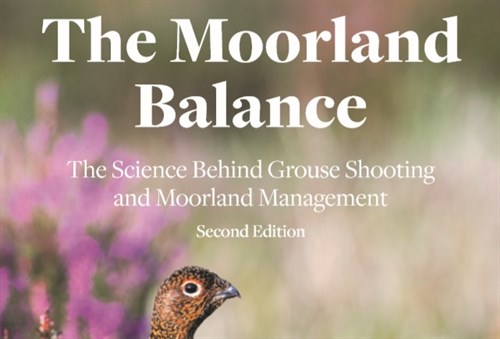Key points
- Buzzards eat different prey species depending on prey availability.
- On Langholm Moor, voles and red grouse share the same moorland habitat of mixed heather and grass.
- In 2011, when field voles were common on the moor, buzzards spent time hunting in this habitat, incidentally finding and predating grouse.
- In 2012 and 2013, when there were fewer field voles on the moor, buzzards hunted away from the heather moorland and onto woodland and edge habitat. This reduced predation on grouse.
Background
 Buzzards are the most common bird of prey in Britain. Recently, their numbers have increased and their range throughout Britain has expanded. Buzzards are generalist predators and are known to eat small mammals, rabbits/hares, and red grouse.
Buzzards are the most common bird of prey in Britain. Recently, their numbers have increased and their range throughout Britain has expanded. Buzzards are generalist predators and are known to eat small mammals, rabbits/hares, and red grouse.
As a predator, buzzards can be affected in two ways by changes in prey numbers or availability. The population of buzzards could change because of changes in breeding success or survival, called a numerical response. The second type of response is a functional response, which is when predators change their diet to eat a more abundant prey.
In this study, the scientists looked at the responses of buzzards in relation to prey abundance on Langholm Moor.
What they did
This study took place between 2011 and 2014 on Langholm Moor in southwestern Scotland.
The abundance of buzzard prey species including field voles, rabbits/hares and red grouse was estimated in the study area. Red grouse were counted twice a year to get an understanding of their pre-breeding abundance both before (in March/April) and after breeding (in July). The abundance of buzzards was also monitored.
To work out the numerical response of buzzards, active nests in the study area were monitored from 2011 to 2013. To work out breeding success, the scientists monitored the nests regularly and recorded the number of chicks that successfully fledged.
The functional response of buzzards was calculated by looking at their diet during the breeding season using nest cameras, prey remains and collecting pellets from near the nest. Prey from remains or pellets was identified in as much detail as possible.
What they found
When vole abundance increased in the study area, buzzards responded by eating more voles. When vole abundance decreased in the study area, buzzards responded by eating fewer. However, the numerical response (breeding success and density) of the buzzard population did not change.
In 2013, when the vole population crashed, the buzzards ate a wider range of prey from the moorland edge and farmland habitats nearby, but fewer grouse. This could be because grouse and voles both prefer the mosaic of heather and grass on Langholm Moor, and buzzards spent less time hunting in these areas in years when there were fewer voles. In 2014, when the vole population rapidly increased, buzzards ate more voles and also more grouse.
What does this mean?
When the preferred prey species of a predator becomes more scarce, predators will often swap to alternative prey. However, this may not be strictly true when the landscape is made up of multiple types of habitat.
In this study, the scientists found that buzzards ate grouse incidentally when hunting for voles. As a result, predation on grouse increased when vole abundance was high. This could be because voles and grouse both prefer the heather/grass mix on Langholm Moor, so in years when there are more voles on the moor, buzzards spend more time hunting there, therefore coming across and eating more grouse. This may not be the same on sites with a more uniform heather moorland habitat.
This study shows that declines in the main buzzard prey species does not necessarily increase predation of alternative prey. The scientists suggest that when looking at predator diet and its impacts on prey, it is important to consider all the resources and habitats that are available to the predator.
Read the original report
Francksen R. M., Whittingham M., Ludwig S., Roos S. & Baines D. (2017) Numerical and functional responses of common buzzards Buteo buteo on a Scottish grouse moor. Ibis 159: 541-553.
About the LMDP
This study was part of the Langholm Moor Demonstration Project, a long-running collaboration between the GWCT, SNH, Buccleuch Estates, the RSPB and Natural England, which aimed to resolve the conflict between driven grouse shooting and raptor conservation. Further papers from the Langholm Moor Demonstration Project can be found on the LMDP website.

The Moorland Balance - eBook - only £4.99
Get the science behind grouse shooting and moorland management. Building on the success of the first edition, this new and improved version condenses thousands of pages of scientific literature into easy-to-read questions and answers. Over 200 different studies from across the scientific community are referenced in this 134-page book.
View Book >
or
Buy Now - £4.99 >
100% Secure. All Credit & Debit cards, PayPal, Apple Pay and Google Pay accepted.
